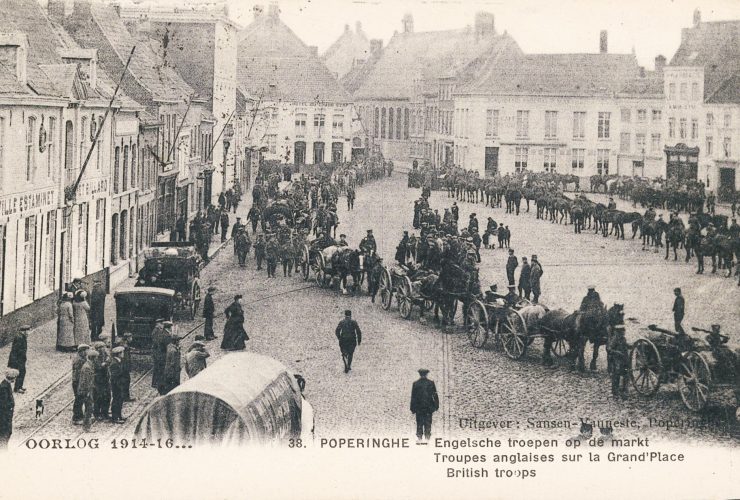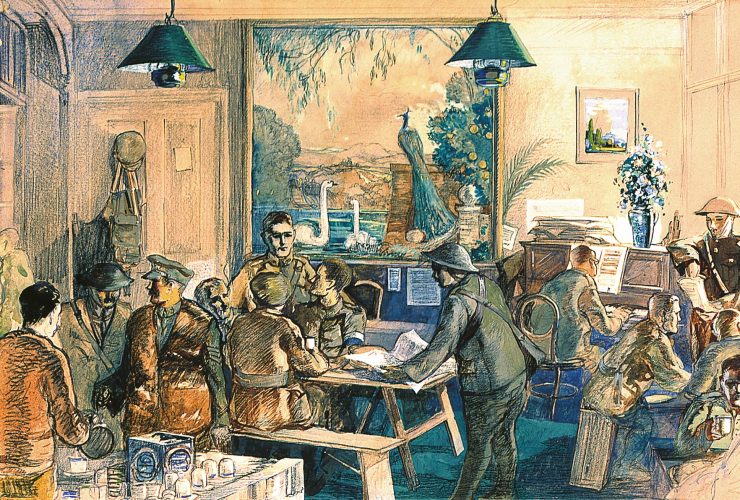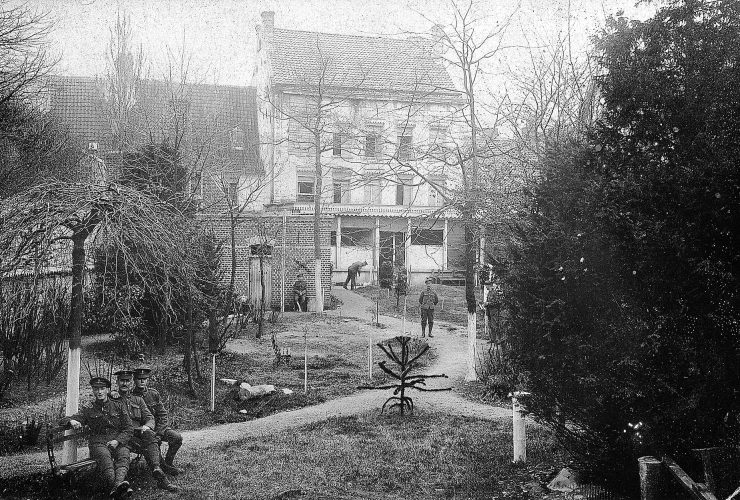Talbot House is in Poperinge, and Poperinghe was an R&R base behind the British lines at Ypres. So, why was the British Army in Ypres in the first place?
At the outbreak of war in 1914, the principal German attack (the right wing) came through Belgium, aimed at Paris. The German offensive was stopped In September 1914, just north of Paris, at the Battle of the Marne. German forces then raced towards the channel ports to cut off the means of supply and evacuation to the British forces. They were stopped, but kept probing further and further north – this was “The Race to the Sea”. Eventually, aiming for the Belgian ports, they were stopped by British and French forces at the Belgian town of Ypres.
The fighting at Ypres was severe and losses on both sides were very heavy. A salient (a U shape: a bulge in the line) was formed around Ypres. British forces would be surrounded on three sides until 1917.
With the end of the Ypres fighting in December 1914, the line stretched from Nieuport to the Swiss border: the Belgians in the north, then the British, then the French. Ypres represented the northern element of the British line, which stretched south, past Armentieres, Arras and Amiens, to the River Somme.
Initially, the British Army was relatively small and its 2nd Corps (there were three Corps at the outbreak of war) held Ypres. As the Army expanded, the original British Expeditionary Force became five Armies (1st to 5th), under John French to 1915, then Douglas Haig. 2nd Corps became 2nd Army in 1915, under General Smith-Dorrien, who was replaced later that year by Herbert Plumer. Plumer remained in charge of 2nd Army through to the Armistice, always with the primary objective of holding Ypres and therefore protecting the access to those Belgian ports held by the Allies.
2nd Army fought four key battles:
- The German diversionary attack of 1915: this was “2nd Ypres” which, infamously, saw the extensive use of gas by the German forces
- The Messines Ridge offensive of 1917 which featured the detonation of massive mines, placed underground by tunnelers. The objective was to eliminate the salient around Ypres and this was achieved
- The “3rd Ypres” offensive, with 5th Army, of 1917 which aimed to take the Belgian ports of Ostend and Zeebrugge, then being used as bases for U-Boats. The offensive got nowhere near the coast and – after very heavy losses, sustained in waterlogged land – was concluded with the taking of the ridge at Passchaendaele
- The German offensive of 1918 which attempted, again, to reach the channel ports and to cut off the British Army, all at a point when US forces had still to deploy in strength. Although both the Passchendaele Ridge and Mt.Kemmel were lost, the attack was held and later that year, Plumer led 2nd Army as an element of the successful Allied offensive (the “100 Days”) which ended the war
Through all of this fighting, Ypres was the key. And behind Ypres sat Talbot House and Tubby Clayton.
In the 1920s, it was Plumer who returned to open the Commonwealth War Graves Commission memorial to the missing of 2nd Army, the Menin Gate. Famously he uttered Kipling’s words, “They are not missing, they are here.”



